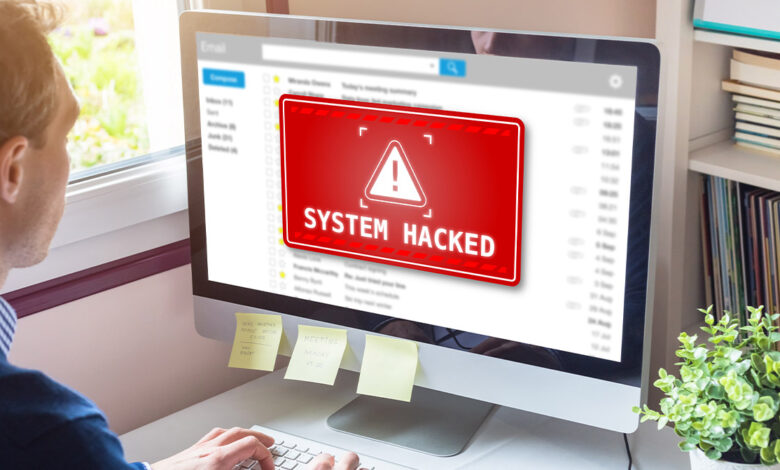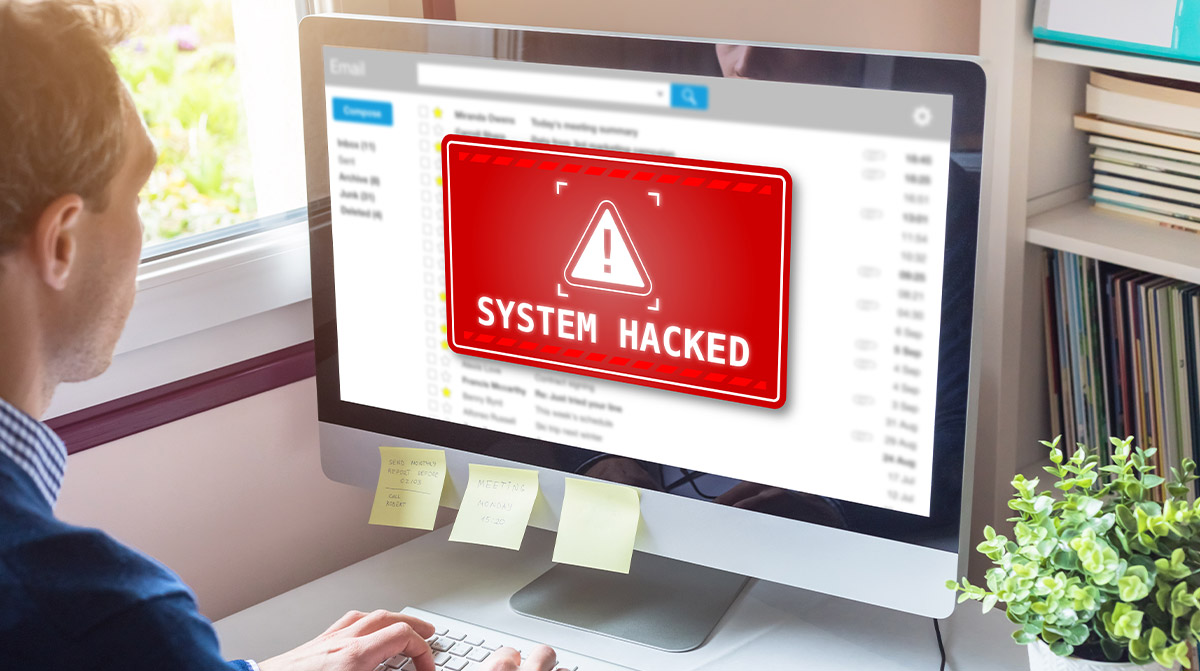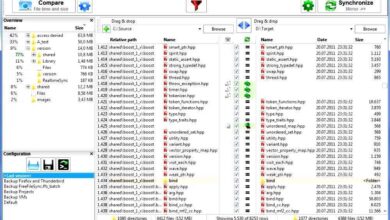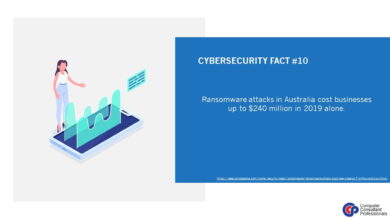
How HR Can Improve Corporate Cybersecurity
How HR can improve corporate cybersecurity is a crucial aspect of modern business. It’s not just about technical solutions; it’s about fostering a culture of security awareness within the entire organization. This involves proactive measures in employee onboarding, offboarding, and ongoing training, as well as clear communication and response strategies during incidents. By understanding the key responsibilities of HR in cybersecurity, businesses can strengthen their defenses and mitigate risks effectively.
This article will explore how HR can take a proactive role in corporate cybersecurity, from developing comprehensive training programs to managing incidents and fostering a security-conscious culture. We’ll examine the legal and regulatory frameworks, best practices, and technological tools available to support HR in their efforts.
Defining the Scope of Corporate Cybersecurity for HR
HR plays a crucial role in fostering a secure digital workplace, extending beyond traditional personnel management. Understanding and implementing effective cybersecurity measures is now a core component of HR’s responsibilities, directly impacting employee well-being and organizational resilience. This shift necessitates a comprehensive understanding of the cybersecurity landscape and its implications for HR policies and practices.A robust cybersecurity strategy is not just a technical concern; it’s a human issue.
HR’s involvement ensures employees are equipped to navigate the digital environment safely and understand the importance of their role in protecting company data. This proactive approach safeguards sensitive information, prevents data breaches, and builds a culture of cybersecurity awareness.
Key Responsibilities of HR in Relation to Corporate Cybersecurity
HR’s involvement in cybersecurity extends across the employee lifecycle, from recruitment to exit. This includes developing and implementing policies, providing training, and ensuring compliance with relevant regulations. These responsibilities are crucial for maintaining a secure digital environment.
- Developing and enforcing cybersecurity policies is a key HR responsibility. These policies should be clear, concise, and easily understood by all employees, covering topics such as password management, safe internet practices, and the handling of sensitive data.
- HR must actively promote cybersecurity awareness training for all employees. This training should be ongoing and tailored to different roles and responsibilities within the organization. Examples include phishing awareness, social engineering prevention, and data handling best practices.
- HR’s role in onboarding new hires includes integrating cybersecurity training into the initial employee experience. This ensures new employees understand the importance of cybersecurity from the start and are properly equipped to contribute to a secure work environment.
Importance of Cybersecurity Awareness Training for Employees
Employee training is paramount in building a strong cybersecurity culture. Regular, comprehensive training fosters a deeper understanding of potential threats and equips employees to identify and respond appropriately.
- Cybersecurity awareness training equips employees with the knowledge and skills to identify and report suspicious activities, such as phishing emails or suspicious websites. This proactive approach is essential for preventing data breaches.
- Training on incident response procedures is crucial. Understanding how to react to potential threats, such as reporting suspicious emails or unusual activity, is vital in mitigating potential damage.
- Effective training fosters a culture of security consciousness, where employees understand their role in protecting sensitive data and company assets.
Legal and Regulatory Frameworks Impacting HR’s Role in Cybersecurity
Compliance with relevant legal and regulatory frameworks is essential. These frameworks dictate the standards and requirements for data protection and security.
- Regulations like GDPR (General Data Protection Regulation) and CCPA (California Consumer Privacy Act) mandate that organizations implement measures to protect personal data. HR plays a critical role in ensuring compliance with these regulations by establishing appropriate policies and procedures.
- Specific industry regulations may also apply, depending on the type of data handled by the organization. HR must ensure that policies and procedures align with these requirements. Understanding and adhering to these regulations helps organizations avoid potential legal repercussions and maintain public trust.
Examples of Best Practices for HR Policies Related to Cybersecurity
Implementing effective policies that promote cybersecurity is a crucial responsibility for HR.
- Establish clear and comprehensive cybersecurity policies. These policies should address various aspects, including password management, data handling, and incident reporting procedures. Clear and accessible documentation is key.
- Regularly review and update policies to reflect evolving threats and best practices. The dynamic nature of cybersecurity demands a flexible approach to policy management. Policies should be revised periodically to maintain relevance and efficacy.
- Conduct regular security awareness training sessions. This is not a one-time activity but an ongoing effort to maintain a strong security culture. Training should be tailored to the specific needs of different departments and roles within the organization.
HR’s Role in Each Stage of the Cybersecurity Lifecycle
HR’s involvement extends across the entire cybersecurity lifecycle.
| Stage | HR’s Role |
|---|---|
| Prevention | Develop and communicate cybersecurity policies; implement training programs; conduct background checks; screen applicants for cybersecurity awareness. |
| Detection | Establish procedures for reporting security incidents; train employees to identify and report suspicious activities; implement systems for monitoring suspicious activities. |
| Response | Coordinate incident response teams; provide support to affected employees; communicate updates to employees and stakeholders; ensure legal compliance. |
| Recovery | Assist in the recovery process; support employees affected by the incident; implement lessons learned from the incident; conduct post-incident reviews to enhance security measures. |
Developing and Implementing Cybersecurity Training Programs: How Hr Can Improve Corporate Cybersecurity

A strong cybersecurity posture relies heavily on a well-trained workforce. Employees are often the weakest link in the security chain, making regular and effective training crucial. This section delves into the essential elements of comprehensive cybersecurity awareness programs, tailoring training to various roles, and measuring their impact.Cybersecurity training is not a one-time event; it’s an ongoing process that must adapt to evolving threats.
This proactive approach fosters a security-conscious culture, equipping employees with the knowledge and skills to identify and mitigate potential risks.
Elements of a Comprehensive Cybersecurity Awareness Training Program
A comprehensive cybersecurity awareness training program should cover multiple aspects. This includes recognizing phishing attempts, understanding secure password practices, and knowing how to handle sensitive data. It should also encompass the organization’s specific security policies and procedures.
HR plays a crucial role in bolstering corporate cybersecurity. A recent vulnerability in Microsoft Azure Cosmos DB, detailed in Azure Cosmos DB Vulnerability Details , highlights the importance of ongoing training. Employees need to understand how their actions, like clicking suspicious links, can compromise sensitive data. Effective training programs can significantly reduce the risk of cyberattacks.
Tailoring Cybersecurity Training to Different Employee Roles and Responsibilities
Training should be tailored to the specific needs and responsibilities of each role. For example, customer service representatives require training on handling sensitive information requests, while IT personnel need specialized training on incident response procedures. Tailoring training ensures employees understand the security risks relevant to their daily tasks. This personalized approach maximizes the effectiveness of the training.
Best Practices for Creating Engaging and Interactive Cybersecurity Training Content
Engaging training content is key to retention. Interactive elements, like quizzes, simulations, and case studies, make the learning experience more dynamic and memorable. Using real-world examples and scenarios that resonate with employees can greatly enhance understanding and application. Visual aids, including infographics and videos, can effectively convey complex information. The training materials should be easily accessible and adaptable to different learning styles.
Measuring the Effectiveness of Cybersecurity Training Programs
Measuring the effectiveness of cybersecurity training is crucial for continuous improvement. Post-training assessments, including quizzes and surveys, can gauge knowledge retention. Monitoring reporting rates for suspicious activities and observing changes in employee behavior can also provide valuable insights. By analyzing these metrics, HR can refine the training program, focusing on areas needing improvement. Tracking and analyzing results can help determine which training methods are most effective.
Training Methods for Cybersecurity Awareness
Different methods can be employed to deliver cybersecurity awareness training. Each approach has its own strengths and weaknesses, impacting the effectiveness of the training.
| Training Method | Effectiveness | Description |
|---|---|---|
| Interactive Simulations | High | Mimicking real-world scenarios provides practical experience and reinforces learning. |
| Videos and Animations | Moderate | Visual aids can effectively communicate complex information in an engaging manner. |
| Workshops and Seminars | High | Facilitated discussions and Q&A sessions foster a deeper understanding of security concepts. |
| Gamified Training | High | Using game mechanics can make learning fun and encourage active participation. |
| Regular Security Newsletters | Low | Passive information delivery may not lead to deep understanding or retention. |
| Role-Playing Exercises | High | Practicing security procedures in a simulated environment improves application of knowledge. |
Employee Onboarding and Offboarding Procedures
Securing employee access and data is paramount to corporate cybersecurity. Effective onboarding and offboarding processes are crucial components in this strategy, ensuring that sensitive information remains protected throughout an employee’s tenure. Integrating cybersecurity best practices into these procedures is not just a good idea; it’s a necessity in today’s threat landscape.A robust approach to employee onboarding and offboarding minimizes the risk of data breaches and maintains the confidentiality of company information.
This involves proactive steps to educate new hires and ensure proper data handling when an employee leaves. The focus is on preventing accidental or malicious misuse of company resources.
Integrating Cybersecurity Best Practices into Onboarding
Onboarding is the ideal time to instill cybersecurity awareness and solidify company policy. New hires should be presented with a clear understanding of the importance of cybersecurity and their role in protecting company data. A well-structured onboarding program will set the tone for the employee’s future actions and responsibilities regarding company data.
- Initial Cybersecurity Training: Deliver a comprehensive cybersecurity training session early in the onboarding process. This session should cover policies, procedures, and best practices related to password management, phishing awareness, social engineering, and handling sensitive data. A practical example might include simulating a phishing email to show how to identify fraudulent communications.
- Policy Review and Acknowledgment: Require new hires to review and acknowledge the company’s cybersecurity policy. This ensures that they understand their obligations and the consequences of non-compliance. The acknowledgment should be recorded and kept on file.
- Secure Access Provisioning: Establish a process for securely granting access to necessary systems and resources. This should be handled by IT and HR departments, minimizing the risk of unauthorized access. Avoid providing access to systems or data before the employee is fully trained.
- Device Security Training: Include training on secure device usage, including password protection, data encryption, and appropriate use of company-issued devices. Specific guidance on using personal devices for work should be included.
Secure Employee Offboarding Procedures
Proper offboarding is just as important as onboarding, ensuring that departing employees do not have lingering access to sensitive information. This process should include a clear, step-by-step procedure to secure data removal and prevent any potential breaches.
HR plays a crucial role in boosting corporate cybersecurity. Training employees on phishing scams and safe password practices is key. This is especially important now, given the recent Department of Justice Offers Safe Harbor for MA Transactions policy , which highlights the importance of robust security measures. Ultimately, a well-informed workforce is a company’s best line of defense against cyber threats.
- Data Inventory and Access Review: Identify all systems and data accessible to the departing employee. A thorough review is necessary to ensure that no sensitive data remains accessible. This inventory should be done in coordination with IT.
- Access Termination Procedure: Implement a formal process for revoking access to company systems and resources immediately upon the employee’s departure. This process should be documented and followed meticulously to prevent any unauthorized access.
- Data Removal and Disposal: Establish a clear procedure for removing all company data from the employee’s devices, including laptops, mobile phones, and other storage media. This includes secure data wiping and disposal of physical media. Specific guidelines on the disposal of hard drives should be in place.
- Final Review and Documentation: Conduct a final review of the offboarding process to ensure all steps were followed correctly. Thorough documentation is essential for accountability and future reference.
Importance of Clear Communication During Onboarding
Clear communication about cybersecurity policies is crucial. Employees must understand the importance of these policies and their role in maintaining the security of company data. Open communication channels between HR and IT are key to ensuring a unified message and a consistent approach.
| Step | Action | Responsibility |
|---|---|---|
| 1 | Review and acknowledge the cybersecurity policy. | Employee |
| 2 | Complete initial cybersecurity training. | Employee |
| 3 | Receive secure access to necessary systems. | IT |
| 4 | Complete device security training. | Employee |
Building a Cybersecurity-Conscious Company Culture
Cultivating a strong cybersecurity culture isn’t just about implementing policies; it’s about embedding a proactive mindset within every employee. This approach fosters a sense of shared responsibility, making cybersecurity a collective effort rather than a burden on designated teams. A proactive culture reduces vulnerabilities and strengthens the overall resilience of the organization.A cybersecurity-conscious culture goes beyond compliance. It necessitates a deep understanding of potential risks and encourages employees to think critically about their actions, making them active participants in safeguarding the company’s digital assets.
This culture promotes vigilance and empowers employees to report suspicious activities, thereby enhancing the organization’s security posture.
Methods for Fostering a Strong Cybersecurity Culture
A strong cybersecurity culture is built on a foundation of consistent communication, clear expectations, and a supportive environment where employees feel comfortable reporting suspicious activity. It’s not just about enforcing rules; it’s about creating an atmosphere where cybersecurity is valued and prioritized by everyone.
- Promote Open Communication: Establish clear communication channels for employees to voice cybersecurity concerns without fear of retribution. This includes dedicated email addresses, online forums, or even suggestion boxes. Regular updates and transparent communication about security incidents and preventative measures help build trust and understanding. Open dialogue is vital to ensuring that employees feel comfortable discussing potential vulnerabilities or suspicious activities.
- Encourage Employee Reporting of Suspicious Activities: Implement a robust system for employees to report suspicious activities. This system should be easily accessible, user-friendly, and prioritize confidentiality. Establish clear guidelines on what constitutes suspicious activity. Encouraging reporting is a critical component in detecting and mitigating potential threats before they escalate. This can include phishing attempts, unusual login activity, or suspicious emails.
- Utilize Incentives and Recognition: Recognize and reward employees who demonstrate proactive cybersecurity behavior. This could include spot bonuses, public acknowledgments, or participation in company-wide security awareness programs. Rewarding good behavior reinforces the importance of cybersecurity and motivates employees to remain vigilant. This could include incentives for identifying potential vulnerabilities or reporting suspicious activities.
- Establish a Cybersecurity Awareness Program: Regularly conduct cybersecurity training and awareness programs to keep employees informed about the latest threats and best practices. This helps reinforce knowledge and keeps employees updated. This is a critical component of fostering a strong cybersecurity culture. This should be an ongoing and regularly scheduled program, not a one-time event.
Examples of Effective Communication Channels
Effective communication is key to disseminating information and fostering a culture of cybersecurity awareness. A variety of channels can be employed to ensure information reaches all employees.
- Company Intranet: A dedicated intranet section or page for security updates, announcements, and training materials ensures easy access for all employees. This allows for consistent and reliable dissemination of information, ensuring everyone is on the same page regarding security protocols and threats.
- Email Newsletters: Regular email newsletters provide concise summaries of security updates, alerts, and best practices. This is a simple yet effective way to keep employees informed about the latest threats and security updates.
- Internal Security Blog/Website: An internal website or blog dedicated to security issues and best practices promotes ongoing learning and discussion. This provides a central hub for all security-related information, making it easy for employees to find the information they need.
- Company-Wide Meetings: Regular company-wide meetings can be used to discuss security matters and encourage open dialogue. This allows for direct interaction and fosters a sense of shared responsibility.
Managing Cybersecurity Incidents
Cybersecurity incidents are unfortunately inevitable in today’s digital landscape. Having a robust incident response plan, especially one that involves HR, is crucial for mitigating damage and maintaining employee trust. A well-defined plan helps organizations navigate crises swiftly and effectively, minimizing disruption and ensuring business continuity.Effective incident response isn’t just about technical fixes; it’s about people. HR plays a vital role in supporting employees through the emotional and practical fallout of a security breach, ensuring a smooth and supportive recovery process.
This includes clear communication, employee assistance, and fostering a culture of resilience.
Importance of Clear Incident Response Procedures for HR
A well-defined incident response plan, with specific HR protocols, is paramount for managing the human impact of a cybersecurity breach. It provides a structured framework for handling various scenarios, from data breaches to phishing attacks. This framework Artikels roles and responsibilities, ensuring a coordinated response. This plan acts as a guide, ensuring consistency and efficiency in crisis situations.
Steps HR Should Take to Support Employees Affected by Cybersecurity Incidents
HR’s role in supporting employees during a cybersecurity incident is multifaceted. First, HR must provide immediate access to resources, such as counseling services or employee assistance programs (EAPs). Second, they must ensure employees understand their rights and responsibilities regarding the incident. Third, HR must establish clear communication channels for employees to ask questions and receive updates. These measures create a supportive environment and help maintain employee morale.
Role of HR in Communicating with Employees About Incidents
Transparent and timely communication is critical during a cybersecurity incident. HR should lead the communication efforts, providing accurate and consistent information to employees. This includes explaining the incident’s nature, impact, and mitigation strategies. Crucially, HR should address employee concerns and anxieties in a compassionate and reassuring manner. This builds trust and reinforces the company’s commitment to employee well-being.
Procedure for Notifying Employees and Stakeholders During a Cybersecurity Incident
A well-structured notification procedure is essential for timely and accurate communication. This involves identifying key stakeholders (employees, managers, and relevant authorities) and establishing communication channels. A tiered notification system, based on the severity and impact of the incident, should be established. The procedure should detail the content of the notification, ensuring clarity and minimizing ambiguity. For example, initial notification should be brief, followed by more detailed information as circumstances permit.
Table Outlining Different Types of Cybersecurity Incidents and Appropriate HR Responses
| Incident Type | Description | Key HR Actions ||—|—|—|| Data Breach | Unauthorized access and/or exposure of sensitive data | Provide immediate support to affected employees, offering counseling and guidance. Explain data breach notification requirements and employee rights. || Phishing Attack | Attempts to trick employees into revealing sensitive information | Conduct comprehensive training to prevent future attacks.
Offer support to employees who fell victim to the phishing attempt. Provide resources on how to report suspected attacks. || Malware Infection | Malicious software that compromises systems | Establish clear reporting procedures for employees who encounter malware. Ensure affected employees are promptly assisted with troubleshooting and recovery. || System Outage | Disruption or unavailability of critical systems | Provide support to employees affected by the outage, especially if it impacts their ability to work.
Communicate alternate work arrangements or support services. || Denial-of-Service (DoS) Attack | Attack designed to overwhelm a system | Communicate the impact of the attack and steps being taken to restore services. Offer reassurance and address employee concerns about work disruptions. |
Utilizing Technology for Enhanced Cybersecurity
HR departments are increasingly recognizing the crucial role they play in bolstering corporate cybersecurity. Beyond training and policy implementation, leveraging technology empowers HR to automate tasks, proactively identify risks, and foster a more secure work environment. This proactive approach not only mitigates potential damage but also strengthens the company’s overall reputation for data protection.
Automating Cybersecurity Tasks for HR
Technology can streamline HR’s cybersecurity responsibilities, freeing up time for strategic initiatives. Automation tools can efficiently manage tasks like password resets, access requests, and termination of employee access, minimizing human error and potential vulnerabilities. For instance, automated systems can promptly revoke access privileges when an employee leaves the company, significantly reducing the risk of data breaches. This proactive approach not only ensures security but also streamlines administrative processes.
Improving Incident Detection and Response
HR can leverage technology to enhance incident detection and response mechanisms. Security information and event management (SIEM) tools can analyze logs from various systems to identify suspicious activity and potential breaches. Sophisticated analytics can pinpoint patterns that might indicate malicious intent, allowing HR to swiftly escalate concerns to the relevant teams. This proactive monitoring minimizes the impact of potential incidents and accelerates the response process.
For example, a SIEM tool can flag unusual login attempts or data access patterns, enabling swift intervention and preventing unauthorized access.
Monitoring Employee Activity for Suspicious Behavior
Monitoring employee activity for suspicious behavior is crucial for identifying potential threats. Advanced analytics tools can analyze employee behavior patterns to detect deviations from normal activity. These tools can flag unusual data access requests, unusual file downloads, or login attempts from unusual locations. By identifying such anomalies, HR can alert security teams to potential risks, preventing potential data breaches and maintaining a secure work environment.
For example, if an employee suddenly begins downloading large volumes of sensitive data or accessing files they haven’t accessed before, the system can flag this behavior for review.
Cybersecurity Software for HR Process Improvement
Various cybersecurity software solutions cater to HR’s specific needs. These tools can streamline access management, automate security tasks, and enhance incident response. Implementing such software can significantly improve overall security posture and reduce the risk of breaches. For example, dedicated HR security software can automate the process of managing employee access to sensitive company data, ensuring that access is only granted to authorized personnel.
Comparison of Cybersecurity Software Solutions for HR
| Software | Key Features | Pricing | Pros | Cons |
|---|---|---|---|---|
| LastPass | Password management, access control, multi-factor authentication | Variable, based on plan | Strong password security, centralized access management | May require additional integration for specific HR workflows |
| Okta | Identity and access management (IAM), single sign-on (SSO), multi-factor authentication | Variable, based on plan | Comprehensive IAM solutions, secure access controls | Can be complex to implement and manage for smaller organizations |
| LogRhythm | Security information and event management (SIEM), threat detection and response | Variable, based on plan | Advanced threat detection capabilities, detailed insights into security events | Requires technical expertise for implementation and maintenance |
Note: Pricing models and specific features can vary depending on the software provider and chosen plan.
Collaboration with IT and Security Teams
HR’s role in corporate cybersecurity extends beyond employee training and policies. Effective cybersecurity requires a strong partnership with the IT and security teams. This collaboration ensures a holistic approach, where HR understands the technical aspects of security and IT/security appreciates the human element. A unified front is crucial to creating a culture of security awareness and responsiveness.A successful cybersecurity strategy hinges on seamless communication and shared understanding between HR and IT/security.
This alignment allows for the development of comprehensive security policies and procedures that are not only technically sound but also practically applicable to the workforce.
Importance of Collaboration
Collaboration between HR and IT/security teams is vital for several reasons. Firstly, it fosters a shared understanding of security risks and vulnerabilities. Secondly, it enables the development of targeted security awareness training programs that address the specific needs of different employee roles and responsibilities. Thirdly, it ensures the integration of security protocols into HR processes, like onboarding and offboarding.
Examples of Successful Collaborations
Many companies have successfully partnered to improve their cybersecurity posture. One example involves a company that integrated security questions into the HR onboarding process. This proactive approach ensured that new hires were immediately introduced to security best practices. Another example is a company that worked with IT to create a dedicated HR security training module. This module addressed data handling and confidentiality, specifically for HR staff dealing with sensitive employee information.
Identifying and Addressing Conflicts
Potential conflicts or misunderstandings can arise due to differing priorities or communication styles. Regular meetings and clear communication channels are essential to mitigate these issues. A dedicated communication channel, such as a shared online platform or a dedicated email list, can streamline information flow and facilitate efficient issue resolution. Moreover, establishing clear roles and responsibilities, outlining who is accountable for what, can avoid confusion and promote shared ownership of security protocols.
HR plays a crucial role in boosting corporate cybersecurity. Beyond just training, companies need to consider proactive measures like implementing secure coding practices. This includes recognizing the need for advanced tools like those discussed in “Deploying AI Code Safety Goggles Needed” Deploying AI Code Safety Goggles Needed. Ultimately, a strong cybersecurity culture starts with a well-informed and engaged workforce, empowering employees to be vigilant about potential threats.
Collaboration Models, How hr can improve corporate cybersecurity
Different collaboration models can be employed, each with its own set of benefits and drawbacks. A project-based approach, for instance, allows for focused collaboration on specific security initiatives. Alternatively, a more integrated approach, where HR and IT/security are constantly collaborating on various tasks, fosters a continuous improvement mindset. A hybrid model, combining elements of both approaches, can provide the flexibility needed to address a range of security challenges.
A dedicated security committee composed of representatives from both departments is another viable model.
| Collaboration Model | Benefits | Drawbacks |
|---|---|---|
| Project-based | Focused efforts, clear deliverables | Potential for siloed communication, less long-term focus |
| Integrated | Continuous improvement, holistic approach | Requires significant coordination and ongoing communication |
| Hybrid | Flexibility, balanced approach | Requires clear defined roles and responsibilities |
| Security Committee | Shared responsibility, diverse perspectives | Decision-making process can be slower |
Communication Process During a Cybersecurity Incident
A clear communication protocol is crucial during a cybersecurity incident. A pre-defined flow chart ensures a swift and organized response.  (Note: A visual flowchart would be helpful here, outlining steps like incident reporting, escalation procedures, and communication channels between HR and IT/security teams. This is a hypothetical flowchart. The exact steps will vary based on company size and structure.)
(Note: A visual flowchart would be helpful here, outlining steps like incident reporting, escalation procedures, and communication channels between HR and IT/security teams. This is a hypothetical flowchart. The exact steps will vary based on company size and structure.)
Closing Notes

In conclusion, HR plays a vital role in building a strong cybersecurity posture within an organization. By implementing the strategies Artikeld here, companies can create a culture of security awareness, reduce vulnerabilities, and ultimately protect their sensitive data and reputation. The proactive approach to training, communication, and incident management discussed in this article is essential for maintaining a robust cybersecurity defense.
User Queries
What are some examples of cybersecurity training methods?
Interactive modules, simulated phishing attacks, and workshops are just a few examples. The most effective methods often combine different approaches to cater to various learning styles.
How can HR measure the success of cybersecurity training?
Post-training assessments, quizzes, and observation of employee behavior can help evaluate the effectiveness of training programs. Tracking reported suspicious activities after training can also be a key metric.
What are the steps for secure employee offboarding?
This includes disabling access to systems, returning company-issued devices, and securely deleting or archiving employee data. Clear communication and procedures are crucial for this process.
How does HR collaborate with IT/security teams to improve cybersecurity?
Open communication channels, shared goals, and joint training initiatives are essential for successful collaboration. Joint audits and awareness campaigns can also help streamline these efforts.





